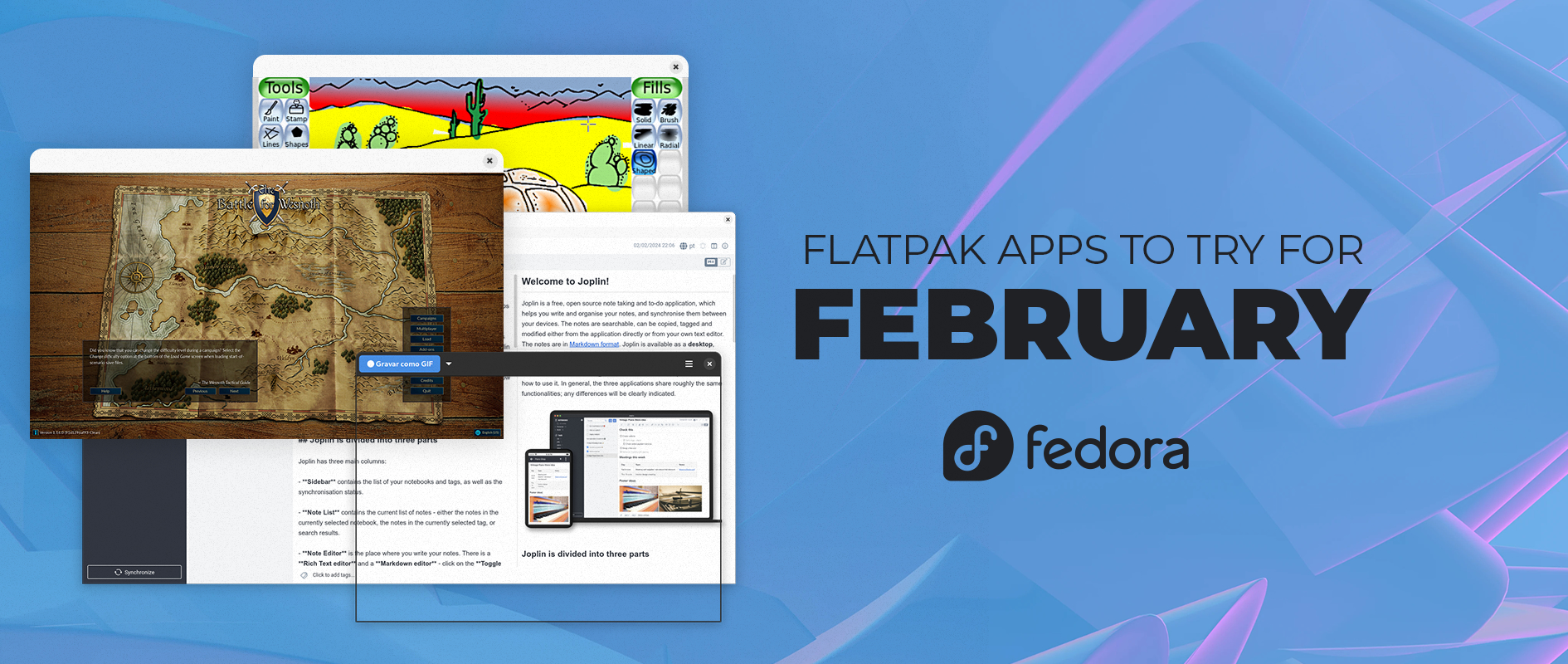Fedora Flatpaks…
They have a unified build system. But it sucks that they duplicate even more libraries while not adding officially supported apps and also not many.
All of the Flatpaks mentioned on the post are available on Flathub though, we do recognize that most people use it, so we recommend apps available on it.
Oh, well should have read it :D
Happens to the best of us 😅
I still don’t understand flatpack on Linux. I see how it makes releasing binaries easy, but the cost and idea is contrary to basic unix principles.
Not everyone values the same things you do. Flatpaks aren’t the cause of the fact that different applications don’t function correctly with different versions of libraries; they’re just the solution.
Flatpak is better for normal people. It’s better for most advanced users who don’t want to micromanage compatibility issues. And it really doesn’t have an impact on people who do want to micromanage because all your alternative ways to install software are still there.
Flatpaks aren’t the cause of the fact that different applications don’t function correctly with different versions of libraries
This problem has been solved by Nix and Guix. Nix is as popular among developers as flatpak is. Add bubblewrap to all applications, and you get nearly all the features as flatpaks. Flatpaks, meanwhile are huge and a bit slow to start - problems that Nix and Guix don’t suffer from.
I do use flatpaks extensively. But they are probably not the best solution to the problems you mention.>
Tbh, for me the value of flatpak is in the isolation (great for how easy it is to achieve), rather than the compatibility.
For example, I run obsidian with no network access and fs access to just the path where my notes are stored. This is really reassuring considering I am not really sure what all the plugins might do. While it is not perfect, it’s much better than having it running natively in my box (I.e. root namespaces).
Isolation is easy to achieve. Flatpak’s sandboxing layer is bubblewrap. It’s an independent software. It wouldn’t be too hard to write a wrapper for bubblewrap that acts like flatpak and launches applications in a carefully constructed sandbox.
It’s also not too hard to cook a Dockerfile for it, or even write a systemd wrapper with security settings. However, with flatpak you get this out of the box and mostly in a transparent way, plus you get all the usually annoying aspects (like having GUI applications work in containers) taken care of.
Which core Unix principles though¿?
Linux is not Unix if you want to use Unix someone has it on floppy disks.
+1 insightfull
Boom.
Are those principle still relevant? Particularly with GUI apps? I feel the sandboxing along is a good reason to switch to flatpak (or even snap if you know).
If you’re interested in sandboxing, then you need just the bubblewrap - not the entire bubblewrap.
A bit of a hassle to do for all your apps when it just comes baked in with flatpak
Flatpak itself is a layer of software. You could do that for regular apps too - to take away the hassle of having to manually set it up for each app. I already have two software that implements that logic in parts.
What cost? It works really well, hence why it’s gaining traction so fast.
Well, there’s the increased storage usage, and in some cases, more ram. There can also be issues with integration with your distro themes, etc.
Many people will consider these as a small cost to the benefits of flatpaks, but I can understand the ones who aren’t sold on it.
Storage increase is a myth https://www.ypsidanger.com/wasting-disk-space/
Disrto theme bugs occur if the dev doesn’t write the app theme agnostic enough. Nothing wrong with flatpak. Those “bugs” will disappear the more flatpak is used
there’s the increased storage usage
Considering how much it is in reality, this is for most users a non-issue. Big issue in embedded devices maybe, but not for desktop users.
deleted by creator
I jumped ship from Ubuntu to fedora last year and fedora is awesome. Fedora has a bit newer packages and the default felt right (albeit I missed system tray plugin from Ubuntu). Some hardware work better OOTB on Ubuntu, so always try with a live distro first.
deleted by creator
I see @joojmachine@lemmy.ml already answered some of your questions, but regarding “why would hardware work differently on fedra”, I assume it has to do with what kernel is being shipped, and what drivers that is also shipped with the distro by default. Sometimes drivers aren’t shipped due to legal reasons, and a distro can be shipped with a kernel that dosen’t have certain support for certain hardware.
You can always download it as an extension instead of a system package for the extension, but yeah, it’s available on our repos.
Also, pretty good. It will likely never be as many packages as there are in Debian’s repos, but even without Flatpak there was never a package I couldn’t find either in our repos or on COPR.
As a contributor, I’m biased, but let me put it this way: it’s the distro that made me so comfortable using it and with a community so welcoming, I became a contributor 😅
I like how Peek hasn’t been updated since like 2019, not even being developed or updated anymore and they recommend it… IT DOESN’T EVEN WORK ON FEDORA!
I’ve literally used it to take the screenshot for it that you see on the banner, it works well enough.





